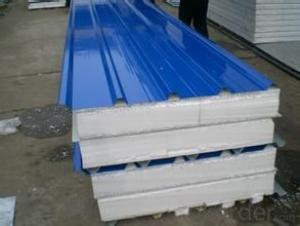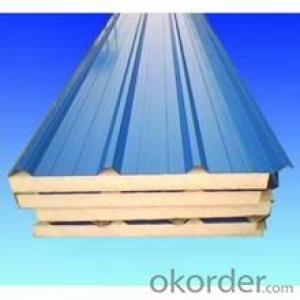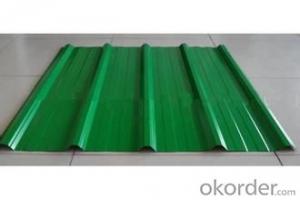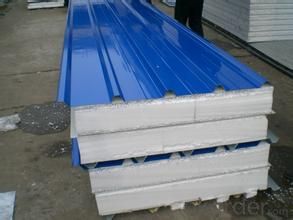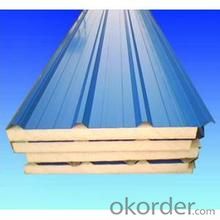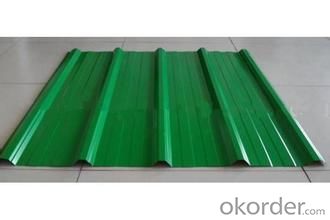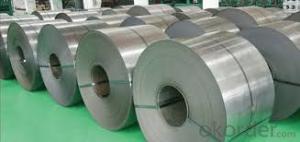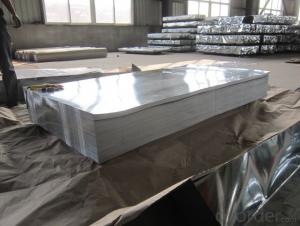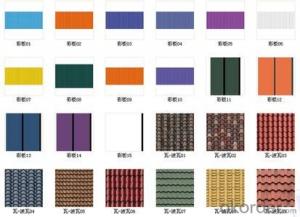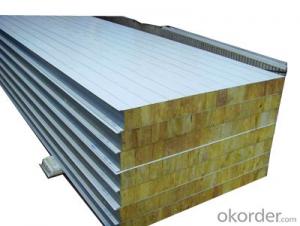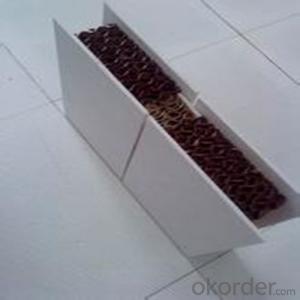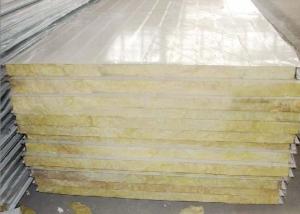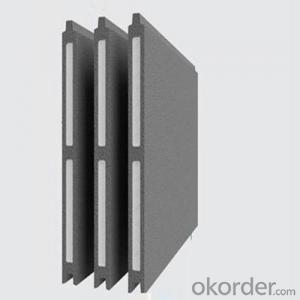Sandwich Panels for Roof or Wall in Hot Sell
- Loading Port:
- Shanghai
- Payment Terms:
- TT OR LC
- Min Order Qty:
- 100 m.t.
- Supply Capability:
- 5000 m.t./month
OKorder Service Pledge
OKorder Financial Service
You Might Also Like
1.Structure of Sandwich Panel
Sandwich panel is composed of 2 layers of weather-proof colored steel sheets and jetted the hard forms of polyurethane between 2 layers which feature fireproof materials. Sandwich panel is suitable for the various roofs and walls referring to the large-size factory buildings, storages, exhibition halls, gymnasiums, freezing stores, purifications workshops, etc, Sandwich panel has features temp-keeping, heat insulation, weight-bearing, weatherproof with the rich colorfulness and good appearance.
2.Main Features of the Sandwich Panel
1) Our EPS sandwich panel has the following characteristics:light dead weight, high mechanical strength, excellent shearing resistant performance, strong corrosion resistance, high durability, and weather fastness, etc.
2) The sandwich panel has excellent insulating performance: heat insulation, sound insulation, waterproof performance, etc.
3) It is easy to install and can be used many times over.
4) Nowadays, the EPS sandwich panel is widely used for cleaning workshops, industrial factory buildings, office buildings, stadiums, villas, and public buildings, etc.
5) Apart from EPS sandwich panels, Wiskind also offers rock wool sandwich panels, glass wool sandwich panels, PU sandwich panels, honeycomb sandwich panels.
6) These products have all passed ISO9001 and ISO14001 certification. Due to their high quality and low price, they are well received by our customers in Russia, Australia, Angola, Congo, and Korea, etc.
3. Sandwich Panel Images
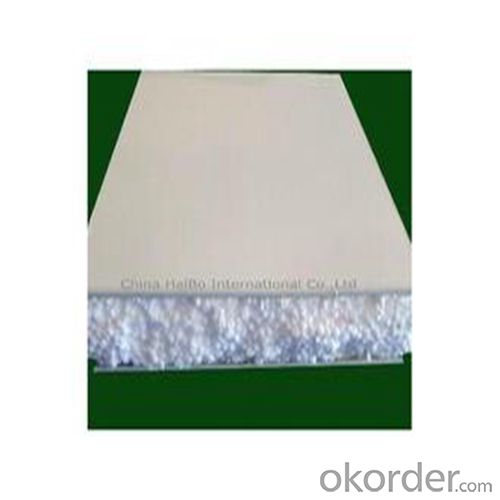
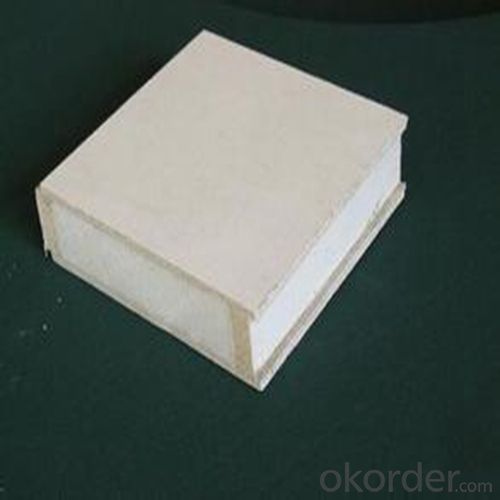
4. Sandwich Panel l Specification
Effective width Wall panel: 950mm 1150mm 1200mm Roof panel: 950mm 980mm
Length According to customer's request
Materials Polystyrene foam board(EPS), Color steel sheet
Structure Upper and lower layer: Color steel sheet
Middle: polystyrene foam board
Thickness Color steel sheet: 0.3-0.6mm
Polystyrene foam board: 50mm 75mm 100mm 150mm 200mm
The polystyrene density 8-20kg/m3
Conventional color RAL standard
Character Light in weight, heat insulation, water resistant, green and environmental
Use various roofs and walls referring to the large size factory buildings, storages, exhibition halls, gymnasiums etc.
5.Advantages of Sandwich Panels
1) Heat and sound insulation: The outer steel sheets can maintain the lastingness of the color of the building, and reduce the solar radiation and keep the appropriate indoor temperature. The high quality heat insulation materials are made with the adoption of polyurethane PU and (PIR) polyisocyanurate resin acid hydrogen containing no Chloro-fluoro-carbons (CFC).
2) A degree inflaming retarding: This system can effectively prevent the fire and prevent the fire from spreading during the cross construction and during the use of the boards
3) Environment protection: By learning after the successful experience in environment protection constructions from companies home and abroad and through our scientific analysis, we objectively bear the idea of “low carbon designing, environmental building materials and energy-saving technology” in mind.
4) Super-low heat conductivity: The lowest heat conducting coefficient of the heat insulation boards ensures that, under the condition that the thinnest heat insulation materials are used; the system can meet the energy-saving requirement and offer the strongest basic guarantee to meet the requirement of high standard heat insulation
5) Easily and quick installation
6.FAQ
We have organized several common questions for our clients,may help you sincerely:
1) How about your company?
2) A world class manufacturer & supplier of castings forging in carbon steel and alloy steel,is one of the large-scale professional investment casting production bases in China,consisting of both casting foundry forging and machining factory. Annually more than 8000 tons Precision casting and forging parts are exported to markets in Europe,America and Japan. OEM casting and forging service available according to customer’s requirements.
3) How to guarantee the quality of the products?
4) We have established the international advanced quality management system,every link from raw material to final product we have strict quality test;We resolutely put an end to unqualified products flowing into the market. At the same time, we will provide necessary follow-up service assurance.
5) How long can we receive the product after purchase?
6) In the purchase of product within three working days, We will arrange the factory delivery as soon as possible. The pecific time of receiving is related to the state and position of customers.Commonly 7 to 10 working days can be served.
- Q: What are the common thicknesses for stainless steel sheets?
- The common thicknesses for stainless steel sheets range from 0.4mm to 6.0mm, with the most commonly used thicknesses being 0.8mm, 1.0mm, 1.2mm, 1.5mm, and 2.0mm.
- Q: Are steel sheets resistant to graffiti?
- Yes, steel sheets are generally resistant to graffiti due to their smooth and non-porous surface, making it difficult for paint and other substances to adhere. Additionally, steel sheets can be coated with anti-graffiti coatings that further enhance their resistance to graffiti.
- Q: Stainless steel plate how to cast mirror plate?
- Stainless steel hot rolled plate mirror polishing (mirror, polishing)In recent years, more and more requirements for polishing of stainless steel hot rolled plate, and even mirror polishing have been demanded. The treatment of hot rolled plate is quite different from that of cold rolled plate, and the whole process is more complicated and difficult to handle than cold rolled plate.
- Q: What are the common applications of steel sheets?
- Steel sheets have numerous common applications in various industries. They are commonly used for construction purposes, such as in the fabrication of roofs, walls, and structural components. Steel sheets are also used in the automotive industry for manufacturing car bodies, frames, and panels. Additionally, they find application in the manufacturing of appliances, furniture, storage tanks, and agricultural equipment. Moreover, steel sheets are extensively used in the aerospace and defense sectors for producing aircraft parts, missiles, and armored vehicles. The versatility, strength, and durability of steel sheets make them a popular choice in these applications and many others.
- Q: What is the difference between a hot rolled and cold rolled stainless steel sheet?
- The main difference between hot rolled and cold rolled stainless steel sheets lies in the manufacturing process and the resulting properties of the material. Hot rolled stainless steel sheets are produced by heating the stainless steel to a high temperature and then rolling it through a series of rollers to achieve the desired thickness. This process is typically used for larger sheets and results in a rougher surface finish. Hot rolled sheets are also known for their inherent strength and malleability, making them suitable for a wide range of applications that require structural integrity. On the other hand, cold rolled stainless steel sheets are produced by cooling the stainless steel to a lower temperature and then passing it through rollers at room temperature. This process results in a smoother and more refined surface finish compared to hot rolled sheets. Cold rolled sheets are often preferred for applications that require a high degree of precision, such as automotive components, appliances, and electronic devices. In terms of mechanical properties, hot rolled stainless steel sheets tend to have a higher yield strength and lower ductility compared to cold rolled sheets. This is due to the grain structure formed during the hot rolling process, which results in a more coarse and less uniform microstructure. Cold rolled sheets, on the other hand, have a finer grain structure and higher ductility, making them more suitable for forming and bending operations. In summary, the main differences between hot rolled and cold rolled stainless steel sheets lie in the manufacturing process and resulting properties. Hot rolled sheets are characterized by a rougher surface finish, higher strength, and lower ductility, while cold rolled sheets have a smoother surface finish, higher ductility, and are often preferred for applications that require precision and forming capabilities.
- Q: What is the maximum width of steel sheets?
- The maximum width of steel sheets can vary depending on the manufacturer and the specific requirements of the project. However, standard steel sheet widths typically range from 36 inches to 72 inches.
- Q: Can steel sheets be used for cladding or façade applications?
- Yes, steel sheets can be used for cladding or façade applications. Steel is a versatile and durable material that can provide structural support, protection, and an aesthetically pleasing appearance to buildings. It is commonly used for cladding and façade applications due to its strength, resistance to weathering, and variety of finishes available.
- Q: How are steel sheets cleaned and maintained?
- Steel sheets are typically cleaned and maintained by removing any dirt or grime using a mild detergent or degreaser, followed by rinsing with clean water. To prevent corrosion, a protective coating such as paint or galvanizing is often applied. Regular inspections and prompt repairs of any damages are also essential for proper maintenance of steel sheets.
- Q: How do steel sheets compare to fiberglass sheets?
- Steel sheets and fiberglass sheets have distinct characteristics that make them suitable for different applications. Steel sheets are known for their high strength and durability. They are capable of withstanding heavy loads and have excellent resistance to impact and abrasion. Steel sheets also offer exceptional fire resistance, making them ideal for applications where fire safety is a concern. Furthermore, steel sheets are relatively low maintenance and can withstand harsh weather conditions, making them a popular choice for outdoor structures such as roofing and siding. On the other hand, fiberglass sheets are lightweight and have excellent corrosion resistance. They are typically made from woven glass fibers embedded in a resin matrix, which gives them high strength-to-weight ratio. Fiberglass sheets are also non-conductive, making them suitable for applications where electrical insulation is required. Additionally, fiberglass sheets are highly transparent to electromagnetic waves such as radio waves, making them commonly used in industries such as telecommunications. While steel sheets offer superior strength and are better suited for heavy-duty applications, fiberglass sheets excel in areas where weight, corrosion resistance, and electrical insulation are important factors. Ultimately, the choice between steel sheets and fiberglass sheets depends on the specific requirements of the application and the desired characteristics needed to fulfill those requirements.
- Q: Are steel sheets suitable for electrical transformer cores?
- Steel sheets are an appropriate choice for electrical transformer cores. They are widely utilized in transformer cores because of their magnetic characteristics and their ability to effectively conduct magnetic flux. The steel sheets used in transformer cores are typically made from top-quality electrical steel, also known as silicon steel or transformer steel. This specific type of steel demonstrates low core losses and high magnetic permeability, which make it an optimal selection for transformer applications. The structure of the steel sheets, which is made up of laminations, aids in reducing eddy current losses by establishing a path of high electrical resistance. These sheets are also coated with an insulating varnish to further minimize eddy current losses and prevent electrical short circuits. The laminations are then assembled together to form the core, creating a path of low reluctance for the magnetic field generated by the transformer's primary winding. The incorporation of steel sheets in transformer cores ensures efficient energy transfer by minimizing energy losses. The magnetic properties of steel contribute to the transformation and regulation of electrical power, allowing transformers to increase or decrease voltage levels while maintaining high efficiency. Moreover, steel sheets possess exceptional mechanical strength and stability, which guarantees the long-term durability of transformer cores. In conclusion, steel sheets are highly suitable for electrical transformer cores due to their magnetic properties, low core losses, high magnetic permeability, and mechanical strength. These properties facilitate efficient energy transfer, voltage regulation, and long-term reliability in transformer applications.
Send your message to us
Sandwich Panels for Roof or Wall in Hot Sell
- Loading Port:
- Shanghai
- Payment Terms:
- TT OR LC
- Min Order Qty:
- 100 m.t.
- Supply Capability:
- 5000 m.t./month
OKorder Service Pledge
OKorder Financial Service
Similar products
Hot products
Hot Searches
Related keywords
